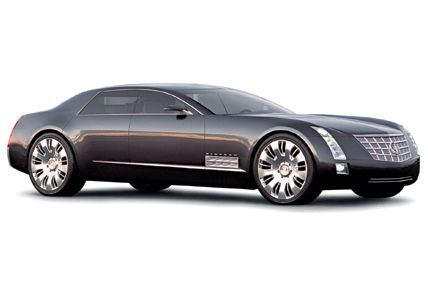Cadillac is developing a V-12 at the General Motors Holden subsidiary in Australia. Whether this survives the decision of General Motors to acquiesce to the new 2020 federal mileage standard of 35mpg. Nonetheless, the word is that the V-12 is destined for a new, top of the line Cadillac based on a Holden vehicle, the Statesman.
This is merely the latest example of GM consigning development of its large cars to Holden. The Pontiac G8 is a version of the Holden Commodore. The platform on which that vehicle is based originally was to be a Detroit design project, but development of the platform in the United States was cancelled in favor of Australian development of the platform.
GM’s Robert Lutz has now told the press that development of the engine is “well under way.” In fact, it is expected that the Australian version could be on the road by 2010. Lutz made the statement admitting that a V-12 is under development at ceremonies opening a Holden dealership in Britain. GM is, in fact, so far advanced that it has been testing prototype versions of the V-12 in Australia in Commodore mules modified to accept the longer engine.
The new vehicle is to be a derivative of the Cadillac Sixteen concept car, the car that initially led to speculation that Cadillac would produce a V-12 and led to the questions to Lutz about a V-12 Cadillac. Like the V-16 in the concept car, the V-12 will be made by joining two engines end to end, but in this instance it will be two V-6s, rather than two V-8s. Based on the displacement of the 3.6 liter V-6, the new engine would be 7.2 liters. It is expected to feature cylinder deactivation as well as the latest GM automatic transmission, both in an effort to improve fuel economy without reducing performance.
This comes as Cadillac prepares to reintroduce the Cadillac nameplate to Australia, initially with the CTS. The new V-12 is aimed at the Lexus LS460 and be positioned above the DTS, or its replacement. It will feature state of the art crash-avoidance electronic and computerized technology to compete head-to-head with the super Toyota, but at a significantly lower price. Indeed, the concept is similar to that which GM is employing with the Corvette ZR-1, i.e., building a car that matches performance of the target cars at a much lower price point.
The development of the new Cadillac, however, is still subject to GM’s final production approval. Whether it gets the go ahead will provide some insight into the impact which GM anticipates from the expected new federal fuel economy standards. On Friday, GM and the other carmakers appeared to cave to Democrat legislators imposition of fuel economy standards requiring a corporate average for cars of 35 mpg by 2020. At least on first impression, the carmakers, including General Motors, appear to have sold out the future of large cars by agreeing to the standards. Some, however, have suggested that the companies believe there are enough loopholes in the legislation to give them room to continue producing larger vehicles. That the cost of meeting the standards will be a significant cost burden seems, however, to be universally acknowledged. Whether that leaves room in the budget for production of a high-ticket model with limited sales remains unknown.
This much, however, is clear: Lutz hasn’t been candid in several of his statements to the press. Lutz has, in the past, denied that GM was developing a new Cadillac with a V-12 or V-16. If a V-12 is in prototype cars and development is “well under way,” then those denials were specious. Moreover, Lutz has several times said that many GM product plans were on hold pending decision on new federal mileage standards. Maybe that doesn’t include development of a new engine larger than offered in any current GM vehicle, but it’s odd that GM would be proceeding with development of a V-12 if other product plans were “on hold.”

